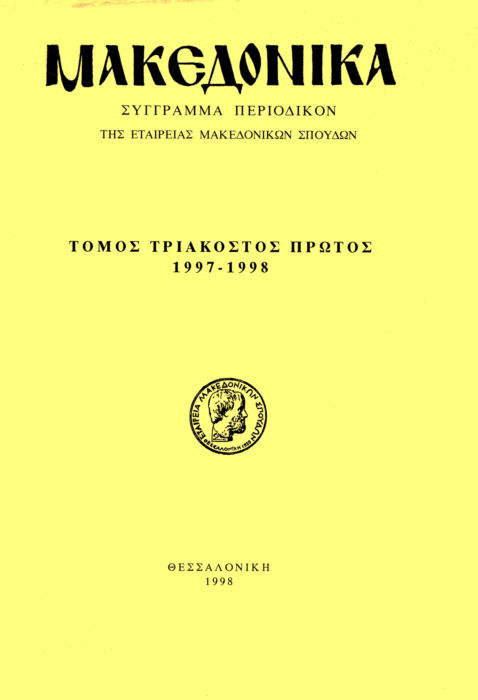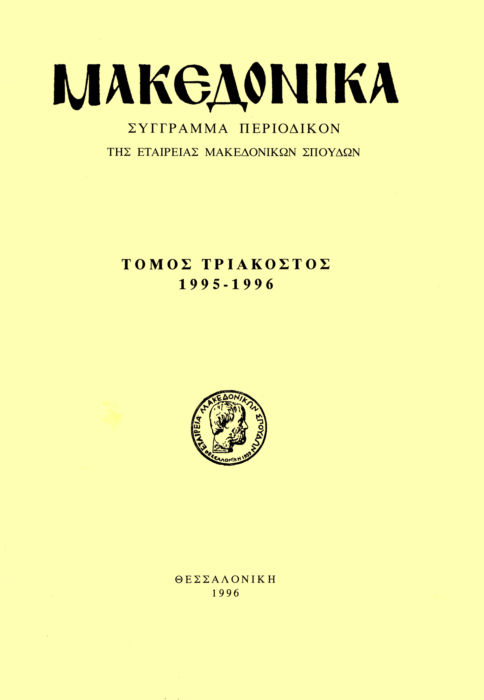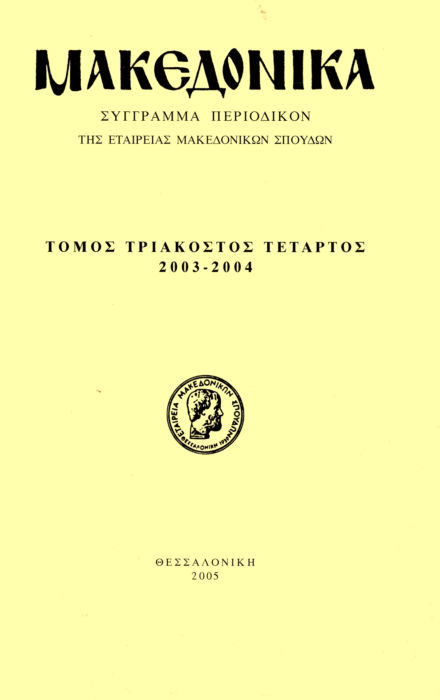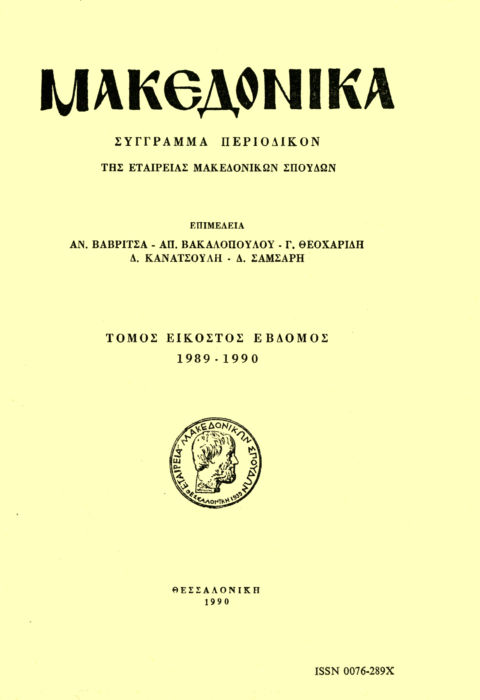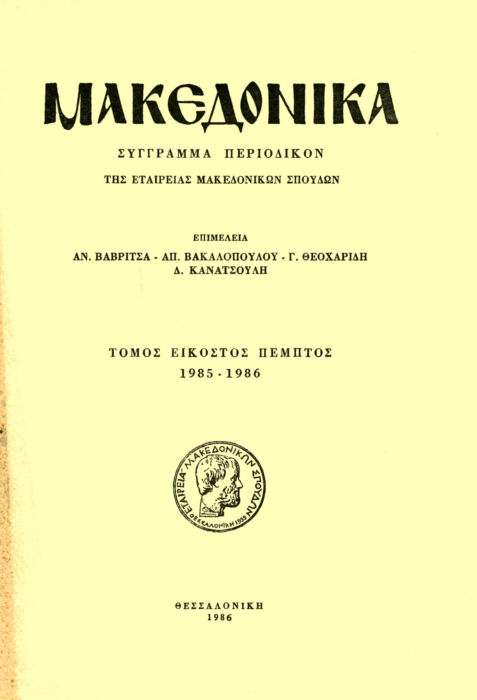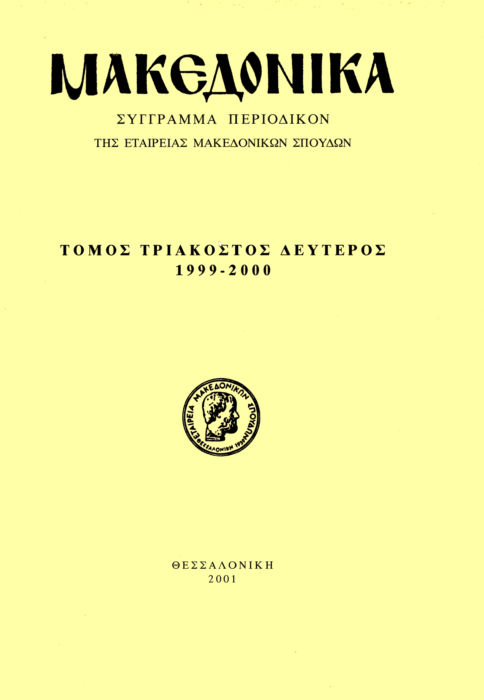The paleologan painting in Eastern Macedonia in relation to the art of Thessaloniki and the Holy Mountain
Abstract
Here we will examine and analyse the painting of the Paleologan era in the Holy Monastery of Timios Prodromos (The Precursor) at Serres, as well as in the small church of Taxiarches at Drama, and the rock-paintings at Oi- noussa and Daphne in the District of Serres.
The short presentation of the remains of the monumental painting in Ea stern Macedonia during the Paleologan period, has led us to some conclusions concerning its relationship to the dominant currents and trends of this period.
The anonymous painter of the earlier frescoes of the Timios Prodromos Monastery has apparently shaped his artistic personnality and left his personal seal on the paintings of the Chilandar Monastery in the Holy Mountain, as well as those of Saint Nicholas Orphanos’s and possibly of St Catherine’s of Thessaloniki, as well as on the paintings of Christ and St Vlassios at Veria. The great style, the artistic integrity as well as the masterly execcution confirm the theory that he probably came from Thessaloniki. The painters who worked at Enate (later layer), Messonyktikon and St Nicholas’s chapel, all in the same monastery, as well as in the small church of Taxiarches at Drama, are in close artistic relationship with the tradition of the Thessaloniki workshops during the second half of the 14th c. (Saviour’s Monastery, Vlatadon Monastery and church of Prophet Elias), while those who decorated the chapel of the Birth of St John the Baptist, also known as “Prodromoudi”, of the Prodromos Monastery at Serres have much in common with the art of the Archangels’ chapel of Chilandar’s Monastery. The isolated frescoe of St John the Precursor in the same monastery reflects the last period of the art in the late 14th and early 15th c., as it is originally shaped in the dominant cultural centre of Thessaloniki and later in the Serbian medieval monuments.
The Paleologan painting of Eastern Macedonia does neither follow its own proper course nor is an isolated case, but is part of the dominant artistic and spiritual ideology which shaped the brilliant universal art of Thessaloniki and the Holy Mountain, which, at this time, reaches its peak. As a result, Thessaloniki, despite the political disorder, in the climate of artistic and ideological unity, claims the title of the capital of Macedonian hellenism, during the Paleologan period, which shows forth with particular brillancy and profusion on the Balkan peninsula. Here we find the happy union of the art of Holy Mountain and its counterpart of Serres and Drama, which provided this period with a “common paleologan language”.
Article Details
- How to Cite
-
Στρατή Α. (2002). The paleologan painting in Eastern Macedonia in relation to the art of Thessaloniki and the Holy Mountain. Makedonika, 33(1), 161–193. https://doi.org/10.12681/makedonika.284
- Issue
- Vol. 33
- Section
- Articles

This work is licensed under a Creative Commons Attribution-NonCommercial-ShareAlike 4.0 International License.
Authors who publish with this journal agree to the following terms:
- Authors retain copyright and grant the journal right of first publication with the work simultaneously licensed under a Creative Commons Attribution Non-Commercial License that allows others to share the work with an acknowledgement of the work's authorship and initial publication in this journal.
- Authors are able to enter into separate, additional contractual arrangements for the non-exclusive distribution of the journal's published version of the work (e.g. post it to an institutional repository or publish it in a book), with an acknowledgement of its initial publication in this journal.
- Authors are permitted and encouraged to post their work online (preferably in institutional repositories or on their website) prior to and during the submission process, as it can lead to productive exchanges, as well as earlier and greater citation of published work (See The Effect of Open Access).




